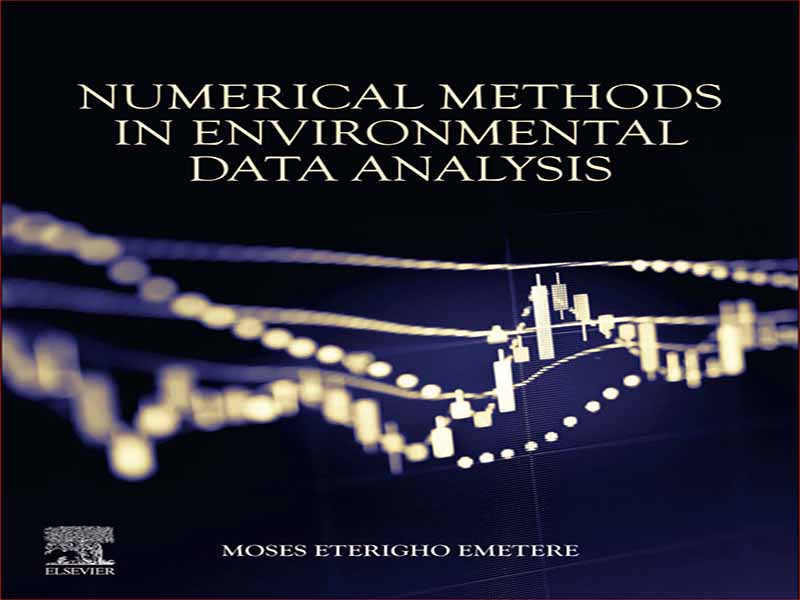- عنوان: Numerical Methods in Environmental Data Analysis
- نویسنده: Moses-Eterigho-Emetere
- حوزه: تحلیل داده
- سال انتشار: 2022
- تعداد صفحه: 242
- زبان اصلی انگلیسی
- نوع فایل: pdf
- حجم فایل: 8.45 مگابایت
داده های محیطی ممکن است بر حسب حقایق کمی، کیفی یا ارجاع جغرافیایی توصیف شوند که نشان دهنده وضعیت محیط و تغییرات آن است. دادههای کمی محیطی شامل دادهها، آمار و شاخصهای پایگاههای اطلاعاتی، صفحهگستردهها، خلاصهها و محصولات نوع سالنامه است. دادههای محیط کیفی، توصیفهایی (مثلاً متنی، تصویری) از محیط یا بخشهای تشکیلدهنده آن هستند که نمیتوانند به اندازه کافی با توصیفکنندههای کمی دقیق یا ارجاعدهنده جغرافیایی نشان داده شوند. دادههای محیطی ارجاعشده جغرافیایی در نقشههای دیجیتال، تصاویر ماهوارهای و سایر منابع مرتبط با یک مکان یا ویژگی نقشه توصیف میشوند. به طور خلاصه، می توان فرض کرد که مجموعه داده ها در مطالعات زیست محیطی مانند خون برای بدن انسان است. تمام تصمیمات در مطالعات زیست محیطی بر اساس قابل مشاهده هایی است که قابل اندازه گیری، قابل اعتماد، واقع بینانه و سازگار با نظریه ها هستند. نظریه های محیطی از روی قابل مشاهده ها فرموله می شوند. از این رو، یک قابل مشاهده معیوب میتواند منجر به شکست عظیم در فرآیندها، پیشبینی، فرمولبندی مدل و تصمیمگیری شود. پیامدهای اجتنابناپذیر تغییرات آب و هوایی، قابل مشاهدهها را دوباره تعریف کردهاند، به طوری که نظریهها و مدلهای جدید به دلیل ناهماهنگی دادهها، نویز و نویزها ضروری هستند. جدای از دریافت مجموعه داده ها و شبیه سازی، اکنون مصلحت است که یکپارچگی یک مجموعه داده اولین خط عملیاتی در تجزیه و تحلیل داده ها باشد. این شاهکار را می توان با هدایت نظریه های اثبات شده به دست آورد. دانش این نظریه، زمان اعمال آن بر روی یک مجموعه داده، نحوه به کارگیری آن، و راههای اعتبارسنجی نتایج در حال ظهور در هر زمینهای از علوم محیطی برجسته است. از این رو، تمرکز این کتاب آموزش افراد مبتدی و حرفه ای در مورد موارد فوق است.
Environmental data may be described in terms of quantitative, qualitative, or geographically referenced facts that represent the state of the environment and its changes. Quantitative environmental data consist of data, statistics and indicators of databases, spreadsheets, compendia, and yearbook type products. Qualitative environment data are descriptions (e.g., textual, pictorial) of the environment or its constituent parts that cannot be adequately represented by accurate quantitative or geographically referenced descriptors. Geographically referenced environmental data are described in digital maps, satellite imagery, and other sources linked to a location or map feature. Summarily, it can be postulated that dataset in environmental studies is like blood to the human body. All decisions in environmental studies are based on observables that are measurable, reliable, realistic, and consistent with theories. Environmental theories are formulated from observables. Hence, a faulty observable can lead to a colossal failure in processes, prediction, model formulation, and decision. The inevitable outcomes of climate change have redefined observables such that new theories and models are necessary due to data inconsistency, noise, and spikes. Aside from just getting dataset and simulating, it is now expedient that the integrity of a dataset be the first line of operation in data analytics. This feat can be achieved through the guidance of proven theories. The knowledge of this theory, when to apply it on a dataset, how to apply it, and ways to validate emerging results are salient in any field of environmental sciences. Hence, the focus of this book is to educate beginners and professionals on the above.
این کتاب را میتوانید بصورت رایگان از لینک زیر دانلود نمایید.



































نظرات کاربران